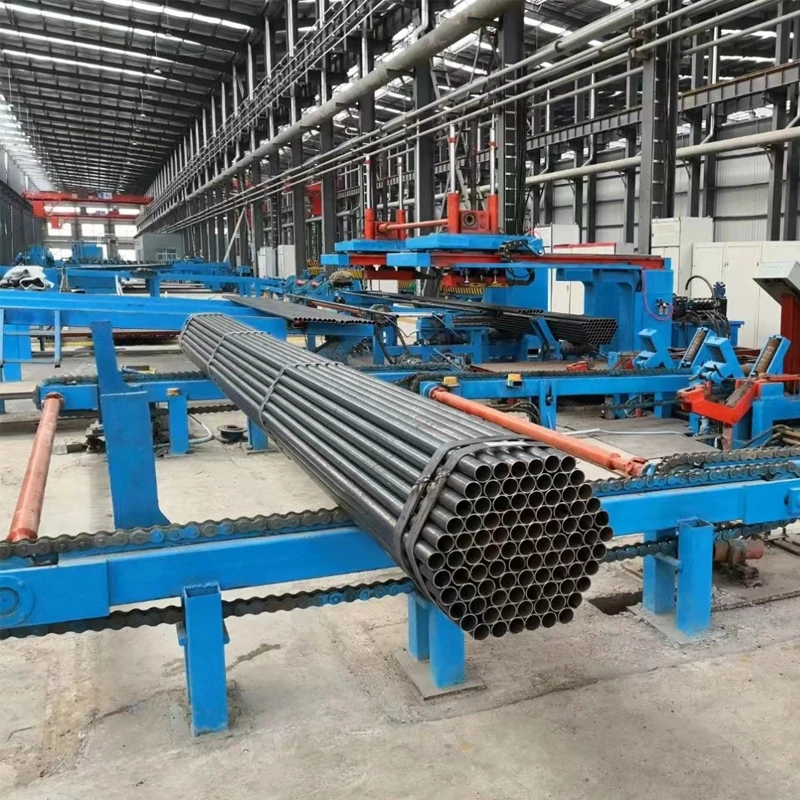Copper Tube Production Equipment for Efficient Manufacturing Processes
The Evolution of Copper Tube Manufacturing Machines
Copper has long been recognized as one of the most versatile and essential metals in modern industries. Its excellent conductivity, corrosion resistance, and malleability make it a preferred choice for various applications, particularly in electrical wiring and plumbing. However, the rise in demand for copper tubes has led to the evolution of copper tube manufacturing machines, which play a crucial role in ensuring efficient production processes.
Understanding Copper Tube Manufacturing
Copper tubes are used extensively in applications ranging from air conditioning systems and refrigeration to plumbing and medical equipment. Their production involves several steps, including melting, casting, extrusion, and final fabrication. Each of these stages relies on specialized machinery designed to handle copper's unique properties.
Historically, copper tube manufacturing began with rudimentary methods, but as technology advanced, so did the machines involved. The earliest machines were manually operated, significantly limiting production speed and efficiency. However, with the advent of automation and computerization, the manufacturing process has undergone a major transformation.
Modern Copper Tube Manufacturing Machines
Today's copper tube manufacturing machines are sophisticated, high-tech devices that optimize every aspect of production. One of the key advancements has been in extrusion machines, which force heated copper billets through a die to create tubes of various sizes and wall thicknesses. These machines can operate at high speeds, increasing output while maintaining precision in diameter and tolerances.
Additionally, modern drawing machines have been developed to refine the size and shape of the tubes. These machines pull the extruded tubes through a series of dies to achieve the final desired dimensions. The drawing process also densifies the material, enhancing its mechanical properties and ensuring it meets industry standards.
Another vital component in many manufacturing setups is the annealing furnace. After extrusion and drawing, copper tubes often undergo an annealing process, which involves heating to relieve stress and improve malleability. Automated annealing furnaces allow for precise temperature control and timing, ensuring consistent results across large production runs.
copper tube manufacturing machine

Quality Control in Copper Tube Production
As with any manufacturing operation, quality control is paramount in copper tube production. Advanced machines are now equipped with in-line testing capabilities, such as non-destructive testing techniques, to ensure the integrity of the tubes. These systems can detect any defects such as cracks, porosity, or inconsistencies in the wall thickness, thereby minimizing waste and ensuring high-quality output.
Moreover, automated packaging and labeling systems have streamlined the final stages of production. Tubes can be cut to precise lengths, bundled, and packaged without manual intervention, reducing labor costs and increasing throughput.
The Future of Copper Tube Manufacturing Machines
Looking ahead, the copper tube manufacturing industry is poised for further innovation. The incorporation of Industry 4.0 technologies, such as IoT (Internet of Things) and AI (Artificial Intelligence), will likely enhance machine-to-machine communication, allowing for even greater efficiencies and real-time monitoring of production processes. Predictive maintenance powered by AI can predict machine failures before they occur, reducing downtime and maintenance costs.
Moreover, there is a growing emphasis on sustainability within the industry. New machines are being developed with energy-efficient designs that minimize waste and reduce the environmental impact of copper tube production.
Conclusion
Copper tube manufacturing machines represent a vital component of the copper processing industry, enabling the production of high-quality tubes that meet the demands of various applications. The ongoing evolution of these machines, driven by technological advancements and a focus on efficiency and quality, is set to transform the industry further. As we embrace new innovations, the future of copper tube manufacturing looks promising, ensuring that this essential metal continues to contribute to technological progress and sustainable practices worldwide.
-
High Frequency Straight Seam Welded Pipe Production Line-BzZhou Xinghua Machinery Equipment Manufacturing Co., LTD.|Precision Welding, High EfficiencyNewsJul.30,2025
-
High Frequency Straight Seam Welded Pipe Production Line|BzZhou Xinghua|Precision Welding&EfficiencyNewsJul.30,2025
-
High Frequency Straight Seam Welded Pipe Production Line - BzZhou Xinghua|Precision Engineering&EfficiencyNewsJul.30,2025
-
High-Frequency Straight Seam Welded Pipe Production Line-BzZhou Xinghua Machinery Equipment Manufacturing Co., LTD.NewsJul.30,2025
-
High-Frequency Straight Seam Welded Pipe Production Line-BzZhou Xinghua Machinery Equipment Manufacturing Co., LTD.|Precision Manufacturing, High EfficiencyNewsJul.30,2025
-
High Frequency Straight Seam Welded Pipe Production Line-BzZhou Xinghua Machinery Equipment Manufacturing Co., LTD.|Precision Steel Pipe Manufacturing&Industrial EfficiencyNewsJul.29,2025


